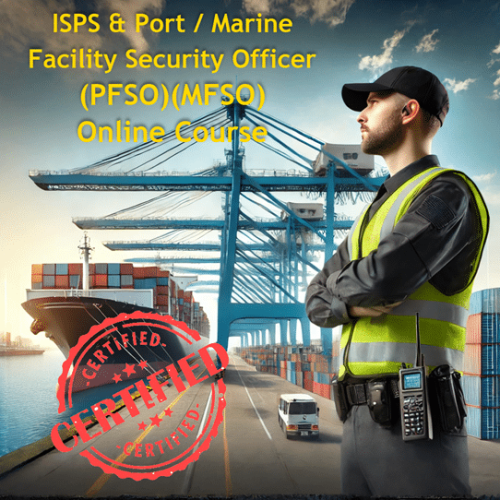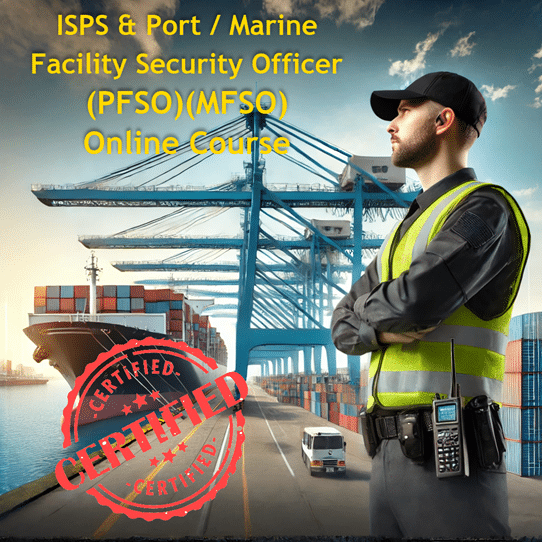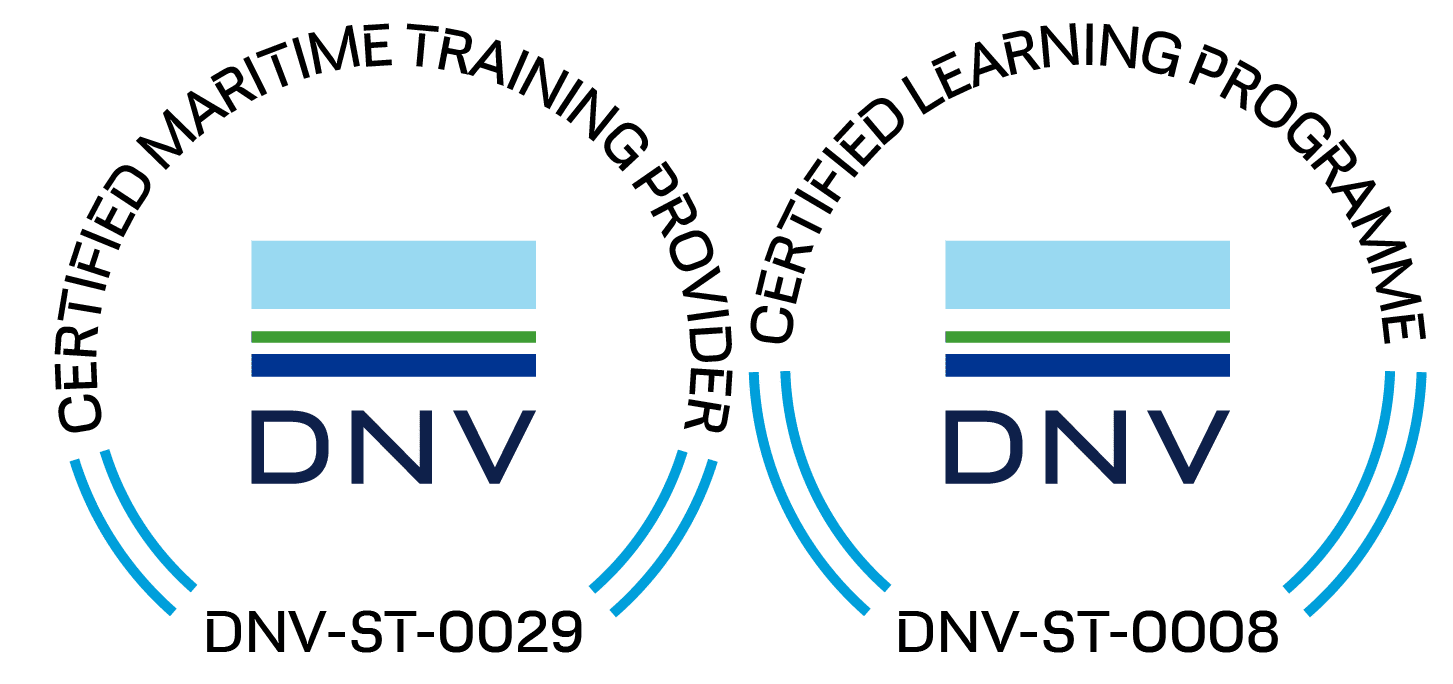ISPS & Port / Marine Facility Security Officer (PFSO/MFSO) – Online Course

Possibly the most informative, fully-online PFSO/MFSO courses, following the IMO model course and available anywhere. This course covers all the required subjects as instructed by the IMO and is key to ensuring that those persons performing the role of the Port/Marine Facility Security Officer fully understand their duties and responsibilities.
Course Information
Get your PFSO Certificate Today!
This course is for:
To give the essential education and training to get certified as a Port/Marine Facility Security Officer and meet the requirements set out in the International Ship and Port Facility Security (ISPS) Code.
Approved Training Courses:
Virtual Maritime Academy, a DNV Certified Maritime Training Provider, this course is DNV Certified Learning Programme in accordance with DNV ST-0008. Additionally, Virtual Maritime Academy is recognized as an institution approved for Continuing Professional Development (CPD). This course has been accredited by the CPD Group, awarding 18 CPD credits, and is globally recognized.
Qualification:
Under the International Ship & Port Security (ISPS) Code qualification
Prerequisite:
No Pre-Requisites
It is assumed that persons attending this course are:
- Employed by a port facility operator; and/or
- Likely to be either designated as a PFSO/Deputy PFSO or the manager responsible for port facility security (to whom the PFSO may report).
Course participants are expected to have a basic understanding of port operations in order to be able to advise and implement the security concept mandated by SOLA S chapter XI-2 and the ISPS Code.
Regulations, Code, Convention Addressed:
The International Ship & Port Security (ISPS) Code.
Learning Objectives:
- Develop, maintain, and how to oversee the implementation of comprehensive Port Facility Security Plans to ensure compliance with regulatory requirements and operational effectiveness.
- Learn and exercise techniques for assessing security risks, threats, and vulnerabilities to enhance the port facility’s defense mechanisms and preparedness.
- Learn how to conduct regular inspections of the port facility to verify the implementation and maintenance of effective security measures.
- Ensure the proper operation, testing, and calibration of security equipment and systems to maintain optimal functionality and reliability.
- Foster a culture of heightened security awareness and vigilance among port facility personnel through effective communication and training initiatives.
Course Structure:
The PFSO/MFSO course is fully online and consists of:
- 8 chapters and the final assessment & course feedback.
- Confirmation questions after each chapter.
- Course Manual.
- A Final Course Assessment.
Assessment:
There are multi-choice questions to complete at the end of each chapter and a final assessment. The passing mark is 70%. The Final Assessment is fully online and no need to attend any classroom. A Proctor will be assigned to you to monitor you during your Final Assessment. You will need a computer(not a tablet or Chromebook) with a webcam and an ok internet speed for your Final Assessment. If for any reason you do not pass with a mark of at least 70% of your Final Assessment there is a fee a 75$ + applicable taxes to re-attempt the Final Assessment.
Final Assessment Equipment Requirements
- Device: A desktop computer or laptop is necessary with a Webcam and microphone. The Final Assessment is not compatible with tablets, cell phones, or Chromebooks.
- Operating System: Windows 10 or later, Mac OS X 11 or later
- Web Browser: Google Chrome v39 or later or Mozilla Firefox v34 or later
- Internet Connection: 3 Mbps or better for upload and download speed
- Hardware: 8GB or more of RAM, Microphone and speakers, Webcam
Length:
Approximately 18 hours.
You can enter and exit this course as often as you require. This course is a do it at your own pace.
Delivery:
The course is 100% online and no requirement to attend a test in a classroom.
Student Verification Requirements:
The student is required to complete a simple online verification form that links from the course, where they will submit a scan of an official photo ID such as a passport, CoC, or similar. This is a requirement under Transport Canada.
Training Certification:
The online PFSO/MFSO Course is internationally accepted. It includes the 2010 Manila Amendments and conforms to Chapter XI-2 of SOLAS 74 as amended, the ISPS Code, the IMDG Code, the IMO/ILO Code of Practice on Security in Ports, and guidance contained in IMO MSC.1/Circ.1341.
Certificate:
A hardcopy will be posted to your address free of charge.
Online Course Subjects:
A course meeting with all the requirements.
- Historical Perspective
- Current Security threats and patterns
- Maritime Security Policy
- Security Responsibilities
- Port Security Assessment and On-Scene Inspection
- Security Equipment
- Port Facility Security Plan
- Threat Identification
- Security Levels
- Drills and exercises
- Ship Security Actions
- Contingency plan
- Security Administration
- Security Training
- And the list can continue……..
- Download the Official Course Syllabus HERE
Revision: 4 2025
Get your PFSO Certificate Today!
Course Progress
Lessons
-
Virtual Maritime Academy Introduction
- Virtual Maritime Academy Introduction
- About the PFSO Course
- Final Assessment Information
- Certification Process
- Course Notices
- Student ID Verification
- Student ID Form
- Course Notes
- Let’s Begin!
-
Historical Overview
- History
- Current Security Threats & Operations
-
Maritime Security Frameworks
- International Maritime Security
- National Maritime Security Structure
- Abbreviations & Definitions
- Port/Ship-related Security
-
Port Security Assessments
- Security Assessment
- Security Equipment
-
Port Facility Security Plan
- The PFSP
- Handling Sensitive Security Related Information
-
Security Measures, Procedures & Awareness
- Security Measures
- Homework – Non-Intrusive Physical Search Demonstration
- Security Procedures(cont)
- Security Procedures(cont2)
-
Contingency Planning
- Planning Is The Key
-
Security Administration
- Admin Work
- Audits
-
Security Training
- Training Requirements
- Instructional Techniques
-
Final Assessment
- Final Check
- Final Assessment
- Final Assessment Request
- Student Feedback
- What’s Next?
-
Certificate
- Certification
- Thank You!
- Open All · Close All








